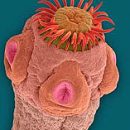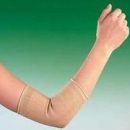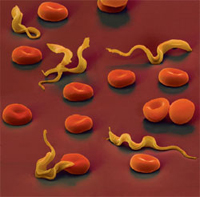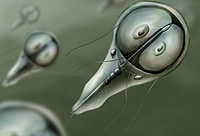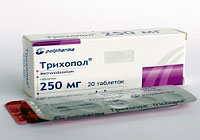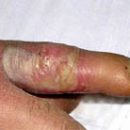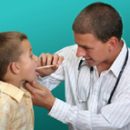What is strondhyloidosis? How the disease occurs? What are the treatment and prevention of strondhyloidosis? All this you can learn from the article.
Content
Strondhyloidosis
Strongiloidosis - Helmintosis (nematodosis), a glitstic disease that flows with the damage to the gastrointestinal tract and allergic manifestations.
The pathogen is a small threaded round worm (nematode)
Strongyloides Stercoralis
(intestinal industry). Male 0.7 mm long, female - 2.2 mm. Oval eggs,
Transparent, size 3-5x3 m. The life cycle proceeds with shift
free-live and parasitic generations. During the migration of the Thrits
reaches puberty; fertilization of females occurs in lungs.
Female individuals parasitize in the intestinal mucosa (usually
in the librinkuine glands of the duodenum), with
Massive infection may be penetrating into the mucous membrane
Pilrory of the stomach, thin and colon, horizontal and
Pancreatic docks. From pending eggs come out
Radititoid (non-invasive) larvae up to 300-400 microns long
With feces. In adverse conditions in 1-4 days of larvae
develop into violelide (infected) forms, and in favorable - in
adults that are able to give rise to a generation of both rabitoid, so
and frayed larvae.
Disease
Wide widespread. Most cases are registered in
tropical countries. In countries with temperate climates, the greatest risk
represent mines and tunnels with warm and wet climates. Source
infection - sick person. Main paths of infection - fecal-oral
and contact.
How strongiloidosis proceeds
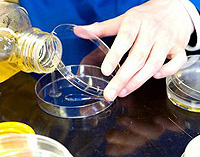
On the
Early stages are characterized by allergic lesions of the skin and lungs, on
Late prevail the lesions of the gastrointestinal tract. With minor infesses, the asymptomatic flow (30% of all patients) is observed. Migration of larvae B
The body causes fever, papulese rashes (small
Flat papules, nodules), skin itch, urticule and edema.
Intestinal stage is accompanied by stomach pain
Various intensity (in heavy cases - sharp pains with the rise
body temperature, anemia, cachexia (body depletion)), nausea, vomiting, diarrhea
mucus. In severe cases, stools - with a grinding smell, contains blood,
mucus and untapped food residues. Light lesions resemble
Such with ascariasis and anklestomose.
Risk group -
Patients with immunodeficiency states. Characterized
Enterocolitis, lesion of liver, hearts, lung and central nervous system. Symptoms:
strongest abdominal pains, diffuse light infiltrates,
intestinal obstruction, meningitis, shock, sepsis.
Research methods - In the early migration phase, the larvae of parasites in sputum are found.
On the
The intestinal stage of Helmint larvae is detected in the contents and
Freckled feces (after receiving laxative) by Bermann.
At
suspicion of strondhyloidosis in the case of the first negative result
Research is repeated 3-5 times with a weekly interval.
Treatment and prevention of strongiloidosis
- Furniture of 200 mg (100 mg children) 2 p / day for 3 days.
Prevention:
- Compliance with personal hygiene rules
- Disinfection of mines and land
- Sanitary and educational work among the population of endemic areas
- A month after treatment, control coprological examination is carried out.

